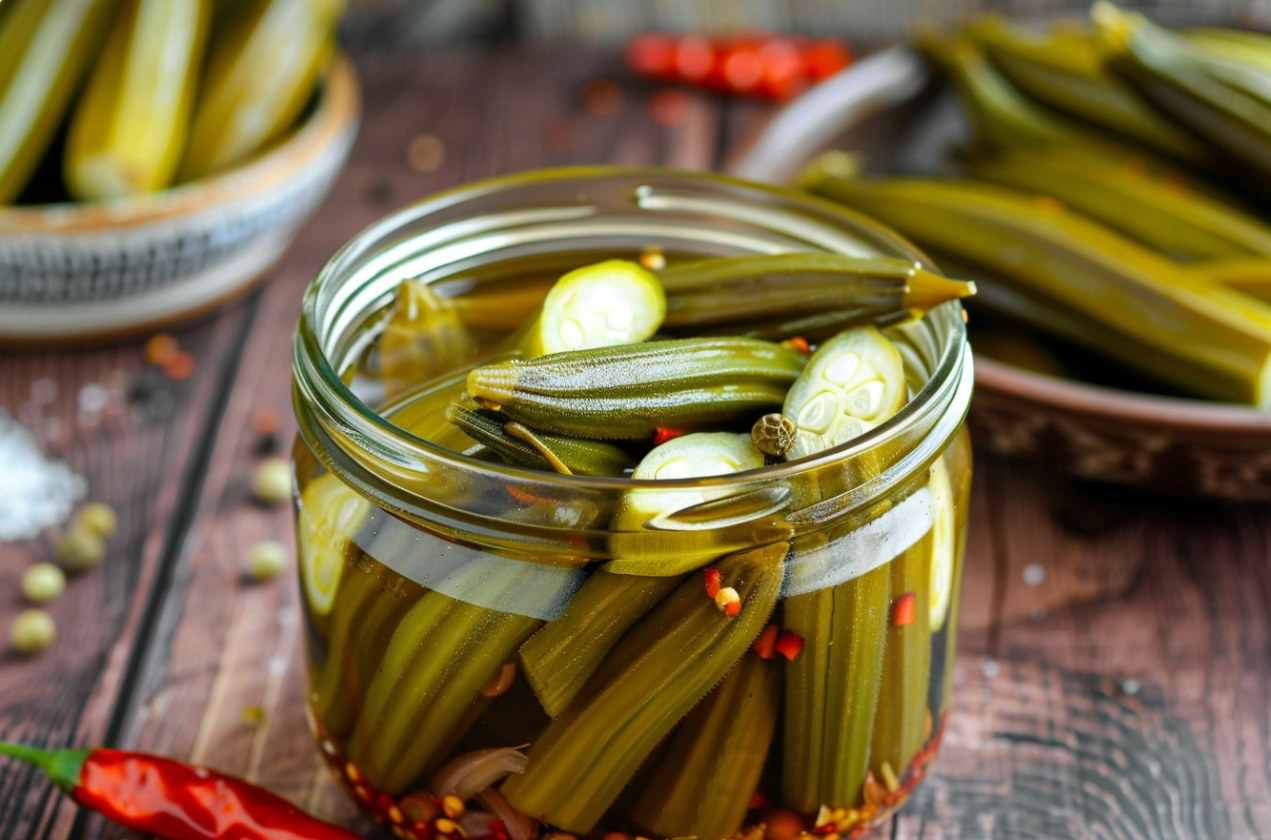Introduction
Overview of Pickling and Its Benefits with Pickled Okra Recipe
Pickled Okra Recipe, a method steeped in tradition, offers a splendid way to preserve and enhance the natural crunch and unique flavor of okra Recipe. This process not only extends the shelf life of seasonal produce but also boosts its nutritional value with probiotics, particularly when methods like lacto-fermentation are applied. The versatility of okra, from its fibrous texture to its mild taste, makes it an ideal candidate for pickling, providing a delightful treat that can be enjoyed year-round. Health Benefits of Lacto-Fermentation
Cultural Significance of Pickled Okra Recipe
In Southern cuisine, pickled okra Recipe holds a place of honor, beloved for its earthy, hearty flavor that complements numerous traditional dishes. As global palates expand, so does the popularity of this pickled delight, moving beyond its roots to become a staple in kitchens worldwide. Its growing appeal is reflected in the culinary innovation it inspires, ranging from simple snacks to gourmet ingredients in high-end restaurants.
Purpose of This Article
This article aims to unfold the art of making pickled okra, covering everything from basic recipes to advanced pickling techniques. By providing a comprehensive guide, readers will learn how to successfully pickle okra at home, ensuring delicious results every time. Additionally, we’ll explore various adaptations to cater to dietary restrictions and answer some common questions to help you perfect your pickling process. With each section, you’ll gain the confidence to experiment with flavors and techniques, making your pickled okra a personalized gourmet feature in your pantry.
Basic Pickled Okra Recipe
Print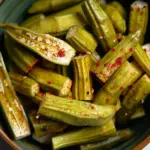
Classic Pickled Okra Recipe
- Author: Sarah White
- Total Time: 25 minutes
- Yield: 4 pints 1x
- Diet: Vegan
Description
Pickled okra is a delicious and tangy treat that adds a zesty kick to any meal. This simple recipe will guide you through the steps to create your own pickled okra at home.
Ingredients
- 1 ½ pounds fresh okra
- 3 dried red chile peppers
- 3 teaspoons dried dill
- 2 cups water
- 1 cup vinegar
- 2 tablespoons salt
Instructions
- Prepare the Okra: Start by washing the okra thoroughly and trimming the stems without cutting into the pods.
- Create the Brine: In a medium saucepan, combine the water, vinegar, and salt. Bring the mixture to a boil, ensuring that the salt is completely dissolved.
- Pack the Jars: While the brine is heating, pack the okra, dried chile peppers, and dill into sterilized jars. Ensure that the okra is tightly packed but not damaged.
- Add the Brine: Carefully pour the hot brine over the okra in the jars, leaving about ½ inch of headspace at the top.
- Seal the Jars: Wipe the rims of the jars clean, then seal them with sterilized lids and bands.
- Process the Jars: Process the sealed jars in a boiling water bath for 10 minutes to ensure a proper seal and to kill any bacteria.
- Cool and Store: Remove the jars from the water bath and let them cool completely. Store the pickled okra in a cool, dark place for at least two weeks before opening to allow the flavors to develop.
Notes
- Ensure all jars are properly sealed to prevent spoilage.
- For a milder flavor, reduce the number of chile peppers.
- Prep Time: 15 minutes
- Cook Time: 10 minutes
- Category: Side Dish
- Method: Pickling
- Cuisine: Southern
Nutrition
- Serving Size: 1 pint
- Calories: 50
- Sugar: 2g
- Sodium: 500mg
- Fat: 0g
- Saturated Fat: 0g
- Unsaturated Fat: 0g
- Trans Fat: 0g
- Carbohydrates: 10g
- Fiber: 3g
- Protein: 1g
- Cholesterol: 0g
Keywords: Pickled Okra
For more tips on pickling, check out this Comprehensive Guide to Pickling Vegetables.
STEPS
Step 1
Gather all ingredients.

Step 2
Examine three pint-sized jars for any cracks and check the rings for rust, discarding any that are damaged. Keep them in simmering water until the brine is prepared. Clean new, unused lids and rings with warm, soapy water.
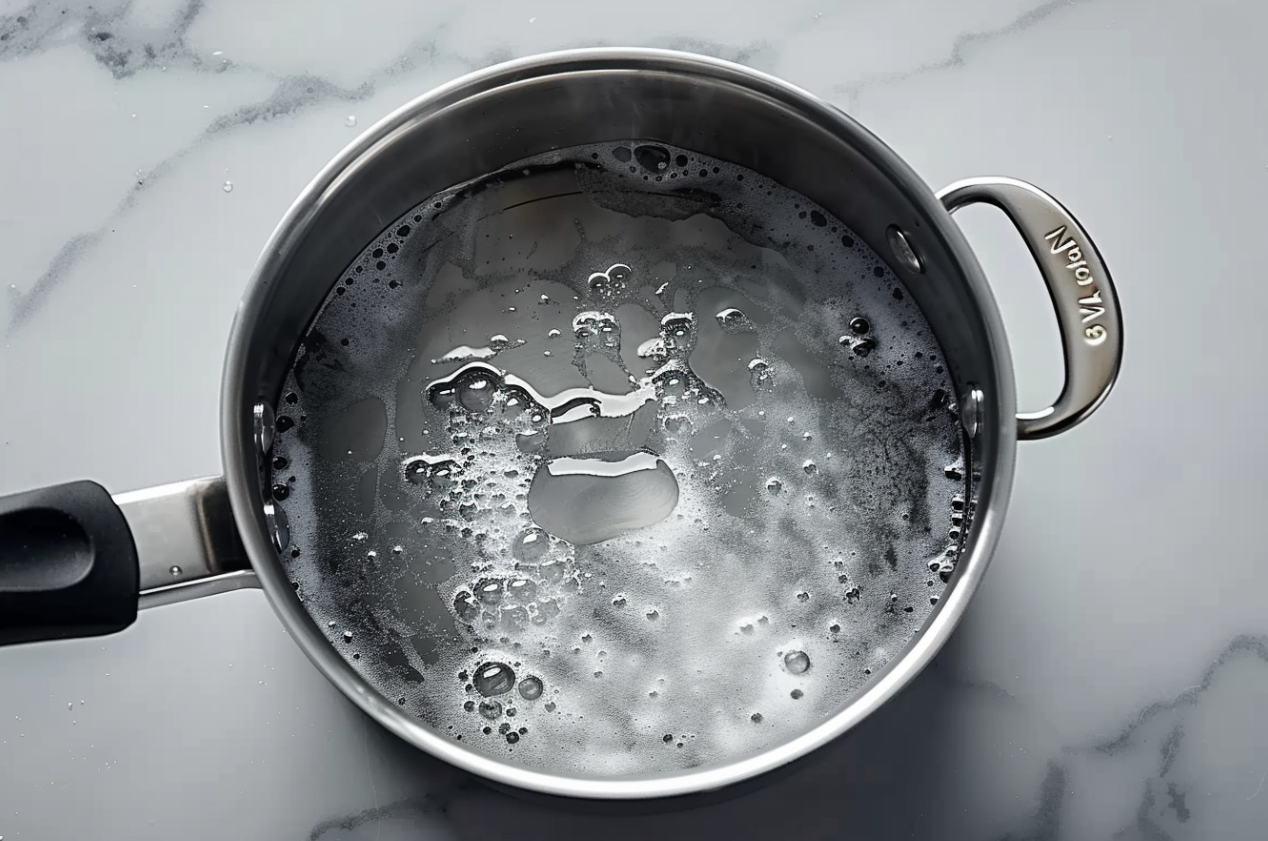
Step 3
In a small saucepan, bring water, vinegar, and salt to a vigorous boil.

Step 4
Evenly distribute the okra among the hot, sterilized jars. Add a dried chili and a teaspoon of dill to each jar. Pour the hot brine over the okra, then use a clean knife or thin spatula to remove any air bubbles by running it around the inside edges of the jars. Wipe the rims with a damp paper towel to clear any residue. Secure the lids and screw the rings on tightly.

Step 5
Position a rack at the bottom of a large stockpot and fill it halfway with water. Bring the water to a boil, then use a jar holder to lower the jars into the boiling water, keeping them 2 inches apart. Add more boiling water until the jars are covered by at least 1 inch. Bring to a vigorous boil, cover the pot, and process for 10 minutes.
Step 6
Carefully lift the jars from the stockpot and place them several inches apart. Allow them to sit undisturbed for 12 to 24 hours. Check the seal by pressing the center of each lid; it should not move up or down. Remove the rings before storing the jars in a cool, dark place.
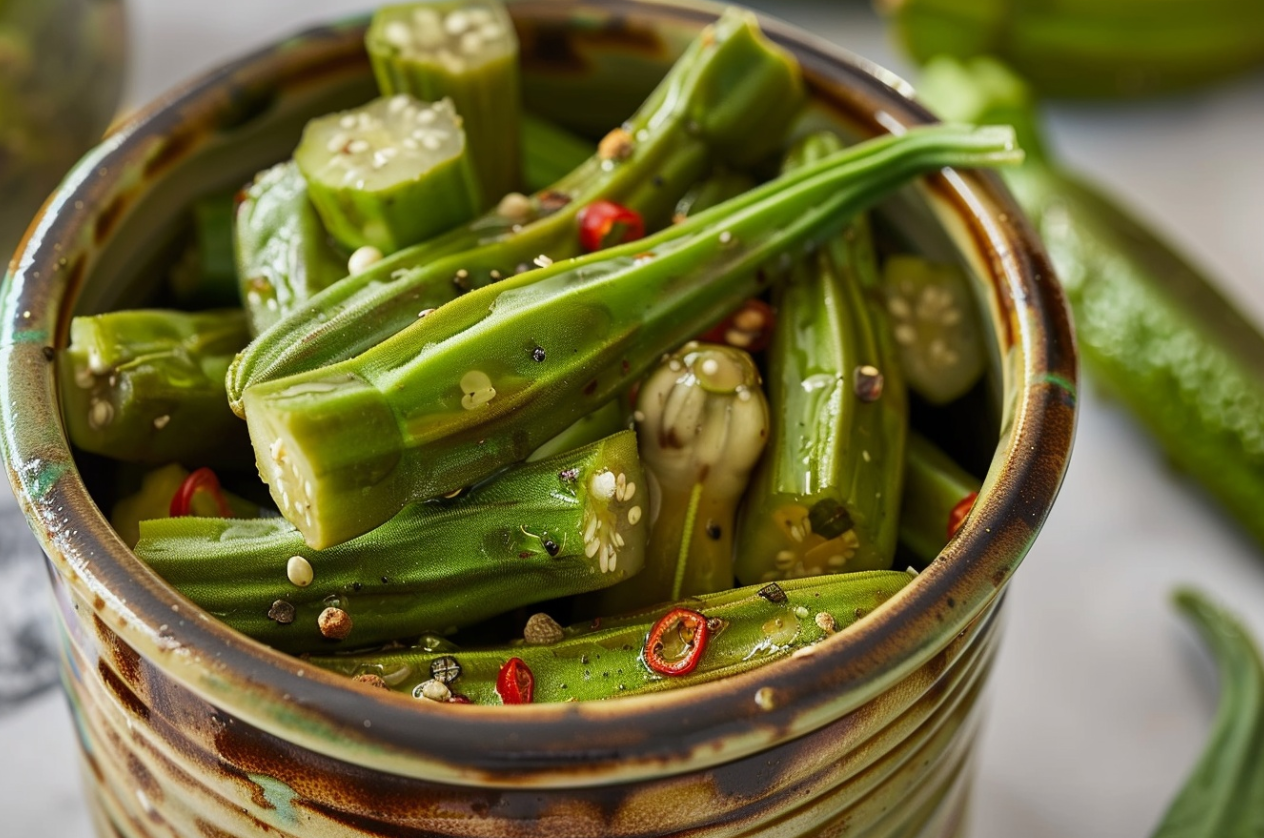
Advanced Techniques for Pickling Okra Recipe
Exploring Fermentation Variations
While vinegar-based pickling is straightforward, experimenting with lacto-fermentation offers a probiotic boost to your pickled okra. This method uses salt water instead of vinegar and allows natural bacteria to ferment the okra, enhancing both its flavor and nutritional value.
- Salt Water Brine: Create a brine with non-iodized salt dissolved in water.
- Submerge the Okra: Ensure the okra is fully submerged in the brine, using a weight to keep it below the surface.
- Ferment: Store the jars at room temperature for several days, checking regularly until the desired level of sourness is achieved.
Flavor Enhancements
To elevate your pickled okra, consider these creative spices and additions:
- Garlic and Dill: Classic flavors that offer a robust taste.
- Hot Peppers: Slice jalapeños or other chili peppers for a spicy kick.
- Infused with Smoked Paprika: Infuse a delicate smokiness that harmonizes with the tang of the brine.
Mixing these ingredients allows for customized flavors that cater to your taste preferences. Creative Pickling Recipes
Storage Advice
Proper storage is crucial for maintaining the quality and safety of your pickled okra:
- Cool, Dark Place: Store your sealed jars in a cool, dark place until opened.
- Refrigerate After Opening: Once opened, refrigerate the jars. Safely Stored, Pickled Okra Persists for Months: Under proper storage conditions, pickled okra maintains its integrity for an extended period.
- Check Seals: Regularly check the seals on your jars. Any signs of bulging or leaking indicate spoilage and should be discarded.
These advanced techniques not only enhance the flavor and longevity of your pickled okra but also introduce you to the satisfying world of home fermentation. For more advanced recipes, visit cookingwhite.

Maintenance and Storage Tips
Routine Checks for Quality
Maintaining the quality of your pickled okra involves regular observation to ensure that it remains safe and delicious to eat. Here are key aspects to monitor:
- Pickled Okra Persists for Months: Under proper storage conditions, pickled okra maintains its integrity for an extended period.
- Seal Integrity: Ensure that the seal on your jars remains tight. A breach in the seal grants passage to bacteria, paving the way for spoilage to invade the okra.
Long-Term Storage Tips
To maximize the shelf life and flavor of your pickled okra, follow these guidelines:
- Cool and Dark Storage: Store your jars in a pantry or cupboard away from direct sunlight and heat sources, as these can degrade the quality faster.
- Stable Temperatures: Fluctuations in temperature can affect the preservation process, so keep your storage area consistently cool.
Troubleshooting Common Issues
Even with careful preparation, you might encounter common issues. Here’s how to handle them:
- Cloudiness in the Brine: Occasionally, the brine may become cloudy. This is often harmless, but if it’s accompanied by an off smell or the okra appears slimy, it’s best to discard it.
- Crunchiness: If your pickled okra isn’t as crisp as you’d like, consider adding a grape leaf to each jar before sealing. The presence of tannins in the leaves contributes to retaining the okra’s crispness.
By implementing these maintenance and storage tips, you can ensure that your pickled okra remains a safe, tasty, and enjoyable addition to your meals for months to come. Proper care not only preserves their delightful crunch but also enhances the overall enjoyment of your homemade preserves. Top Tips for Canning and Preserving

Dietary Adaptations
Low-Sodium Recipes
For those monitoring their sodium intake, modifying the traditional pickled okra recipe to reduce salt is essential. Here are effective substitutions:
- Potassium Chloride: Replace half the salt with potassium chloride to decrease the sodium content without compromising the preservation process.
- Vinegar Choices: Increase the vinegar ratio slightly to enhance preservation and flavor when reducing salt.
Sugar-Free Options
Many pickling recipes include sugar to balance the acidity. For a healthier alternative, consider these adjustments:
- Natural Sweeteners: Use stevia or erythritol as sugar substitutes to maintain the sweet flavor profile without adding actual sugar.
- Adjusting Spices: Increase the use of spices like mustard seeds or cloves to add depth and complexity that sugar typically provides.
Allergy-Friendly Modifications
Allergens in pickling, such as mustard or celery seeds, can be problematic for some. Here’s how to adapt:
- Substitute Spices: Replace allergenic spices with allergy-friendly options that do not compromise taste. For example, swap mustard seeds with crushed bay leaves.
- Herbal Infusions: Use fresh herbs like dill or basil to introduce new flavors while avoiding common allergens.
By incorporating these dietary adaptations, you can ensure that your pickled okra is enjoyable and safe for everyone, regardless of dietary restrictions or health considerations. These modifications allow you to maintain the integrity and taste of your pickled okra while catering to a wider range of dietary needs. Health Benefits of Pickled Foods
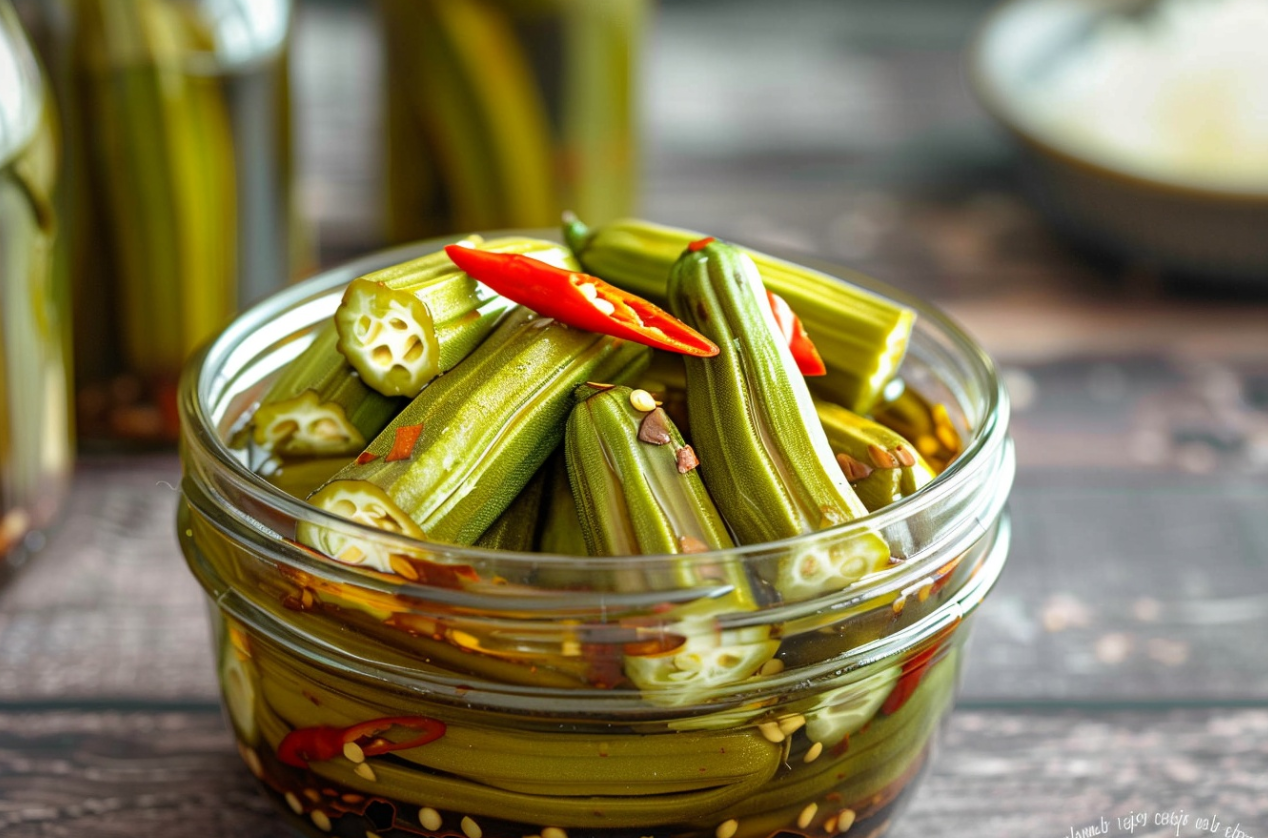
Frequently Asked Questions About Pickled Okra
Which variety of okra is best suited for pickling?
Selecting the right okra is crucial for optimal pickling results. The ideal type is small to medium-sized pods, as they are less fibrous and more tender, making them perfect for absorbing the brine efficiently. Ensure the okra is fresh, firm, and free of blemishes or soft spots.
How long does pickled okra last?
With careful preparation and storage, sealed jars of pickled okra can endure for up to a year in a cool, dim environment. After opening, store in the refrigerator right away and try to finish within two months for the best flavor and texture. To avoid contamination, always use spotless utensils when taking okra from the jar.
Can pickled okra be made spicy or sweet?
Absolutely! To make spicy pickled okra, add slices of jalapeño or a dash of cayenne pepper to the jars before sealing. For a sweeter version, include a small amount of sugar or honey in the brine, or experiment with spices like cinnamon and cloves for a subtly sweet flavor.
What is the best type of okra for pickling?
Selecting the right okra is crucial for optimal pickling results. The ideal type is small to medium-sized pods, as they are less fibrous and more tender, making them perfect for absorbing the brine efficiently. Ensure the okra is fresh, firm, and free of blemishes or soft spots.
How long does pickled okra last?
Properly prepared and stored, pickled okra can maintain its quality for up to a year in hermetically sealed jars stored in a cool, dark place. Once the jar is opened, refrigerate the contents and strive to consume them within two months for peak flavor and texture. Always employ clean utensils to extract okra from the jar, guarding against contamination.
Are there any health advantages to consuming pickled okra?
Yes, pickled okra is rich in fiber, vitamins, and antioxidants, with the added benefit of probiotics if lacto-fermented. These elements can contribute to improved digestion, enhanced immune function, and overall health. However, be mindful of the sodium content, especially if consuming store-bought varieties or if on a sodium-restricted diet.
By addressing these common questions, you can enhance your understanding and appreciation of pickled okra, leading to more successful pickling adventures and enjoyable culinary experiences.
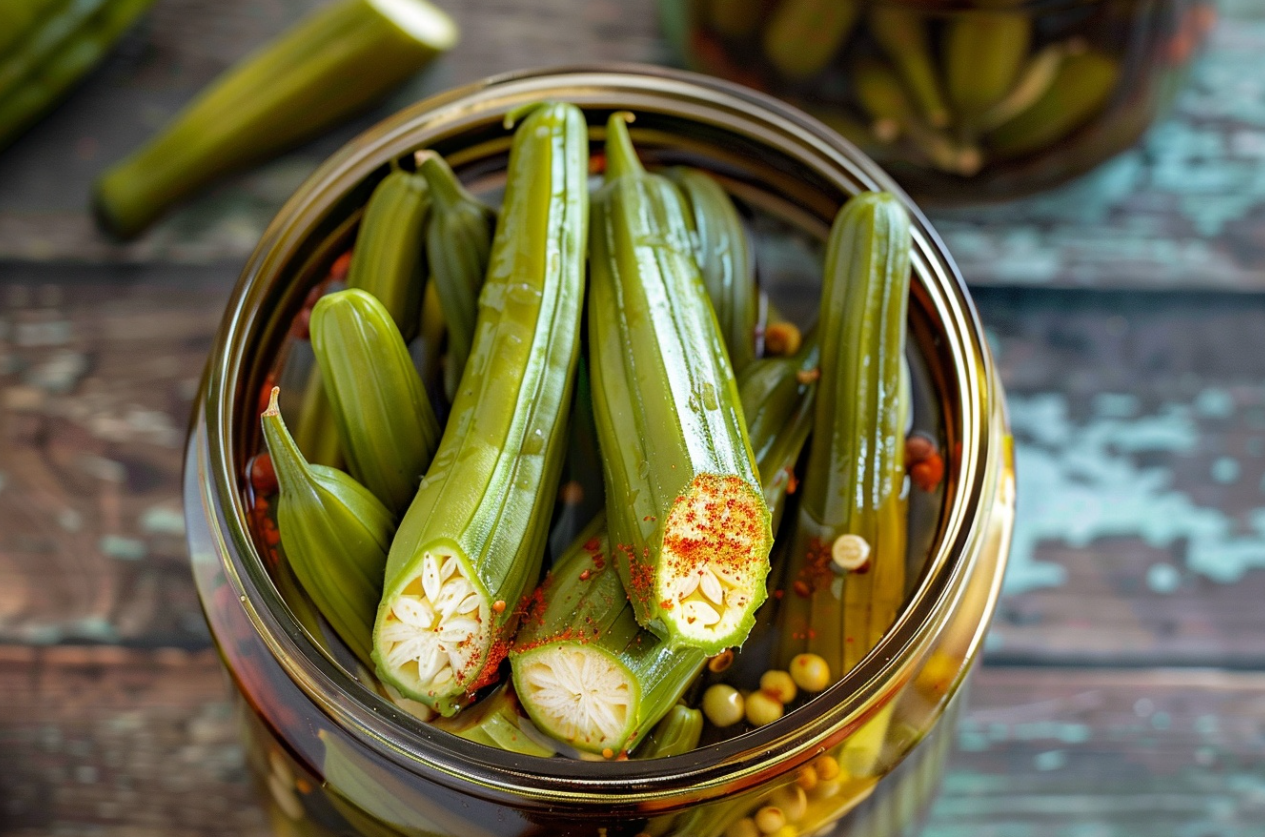
Conclusion
Embracing the Art of Pickling Okra Recipe
As we have explored, the process of pickling okra offers a delightful way to preserve and enhance this versatile vegetable. From the basic steps tailored for beginners to more advanced techniques for seasoned picklers, each method ensures that you can enjoy okra in a new and exciting way throughout the year.
Customization and Health Benefits
The beauty of pickling okra lies in its customization. Whether you prefer your pickled okra spicy, sweet, or tangy, the options are endless and can be tailored to suit any palate. Moreover, the health benefits of including pickled okra in your diet, such as improved digestion and increased nutrient intake, make it a worthy addition to your culinary repertoire.
Continued Exploration
We encourage you to persist in exploring various flavors and methodologies. Every batch of pickled okra presents an opportunity to hone your skills and uncover new preferences. The versatility of pickled okra allows it to be a standout feature in salads, a crunchy snack, or a unique addition to charcuterie boards.
In summary, mastering the art of pickling okra not only adds a flavorful boost to your meals but also brings a sense of accomplishment in preserving food traditionally. With the guidelines and tips provided, you are well-equipped to start your pickling journey and enjoy the fruits of your labor with every crunchy, tangy bite of pickled okra Recipe.
Inspiration for Future Creations
Pickling okra opens up a world of culinary creativity. Use this technique as a stepping stone to explore other pickling adventures with different vegetables and fruits. The skills you develop can lead to innovative recipes and maybe even new family favorites.
Encouragement for Sustainable Practices
Finally, pickling is a step towards sustainable living. By preserving seasonal produce like okra, you reduce food waste and enhance your food’s shelf life. This practice not only saves money but also minimizes your environmental footprint, making it a rewarding endeavor in multiple aspects.
In summary, mastering the art of pickling okra not only adds a flavorful boost to your meals but also brings a sense of accomplishment in preserving food traditionally. With the guidelines and tips provided, you are well-equipped to start your pickling journey and enjoy the fruits of your labor with every crunchy, tangy bite of pickled okra.

